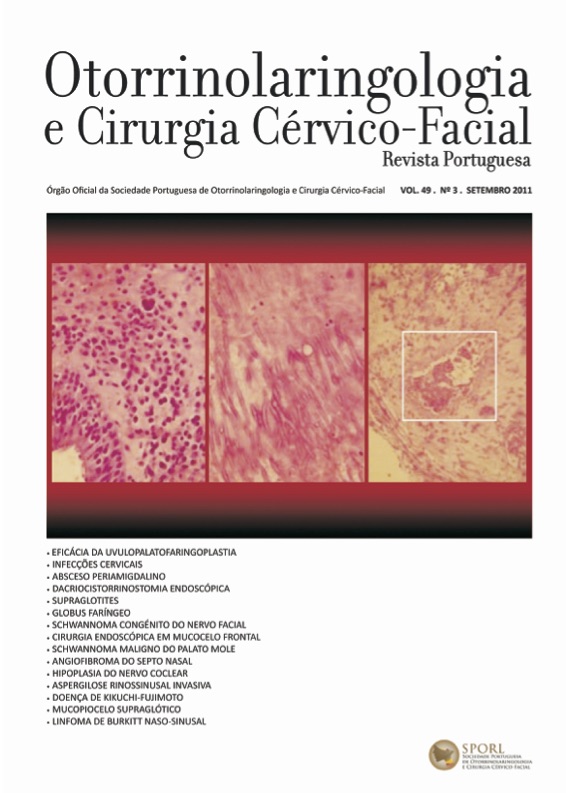Endoscopic dacryocystorhinostomy – Recurrence predictive factors
DOI:
https://doi.org/10.34631/sporl.174Keywords:
dacryocystorhinostomy, endoscopic, success rate, predictive factors for failure, nasosinusal pathology, concomitant proceduresAbstract
Endoscopic dacryocystorhinostomy (DCR) is increasing its popularity as the preferred treatment for lachrymal duct blockage, due to its high success rate, fast healing and avoidance of facial scar.
Aiming to analyse endoscopic DCR success rate in Hospital de São José’s Otolaryngology Department and to establish eventual predictive factors for failure, we present a retrospective study of the last four years.
Our global success rate (86,5%) was similar to literature but inferior (73,9%) in patients with co-existent nasosinusal pathology. However, a higher success rate was accomplished by those patients (90,9%), when submitted to concomitant nasal procedures to correct their nasosinusal problems.
Regarding nasosinusal pathology prevalence and its importance to endoscopic DCR success rate, we defend that otolaryngologists should keep this pathology in mind, aiming to a prompt surgical correction.
Downloads
References
Klap P, Bernard JA, Cohen M, Ameline V et al. Dacryocystorhinostomie endoscopique. In: Encycl Méd Chir, Techniques chirurgicales – Tête et cou, Paris, Elsevier. 2003; 46-185:pp1-14.
Fernandes SV. Dacryocystorhinostomy. 2008; www.emedecine.com. Acedido em Abril 1, 2010.
Nussbaumer M, Schreiber S, Yung M. Concomitant nasal procedures in endoscopic dacryocystorhinostomy. Journal of Laryngology and Otology. 2004 Apr; 118:267-269.






